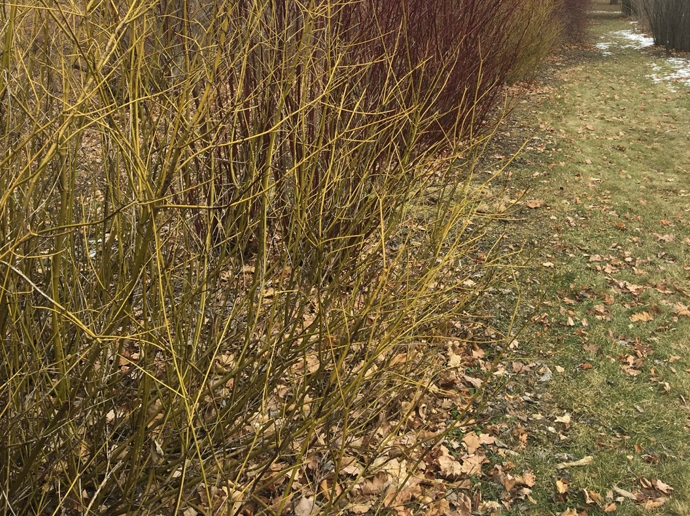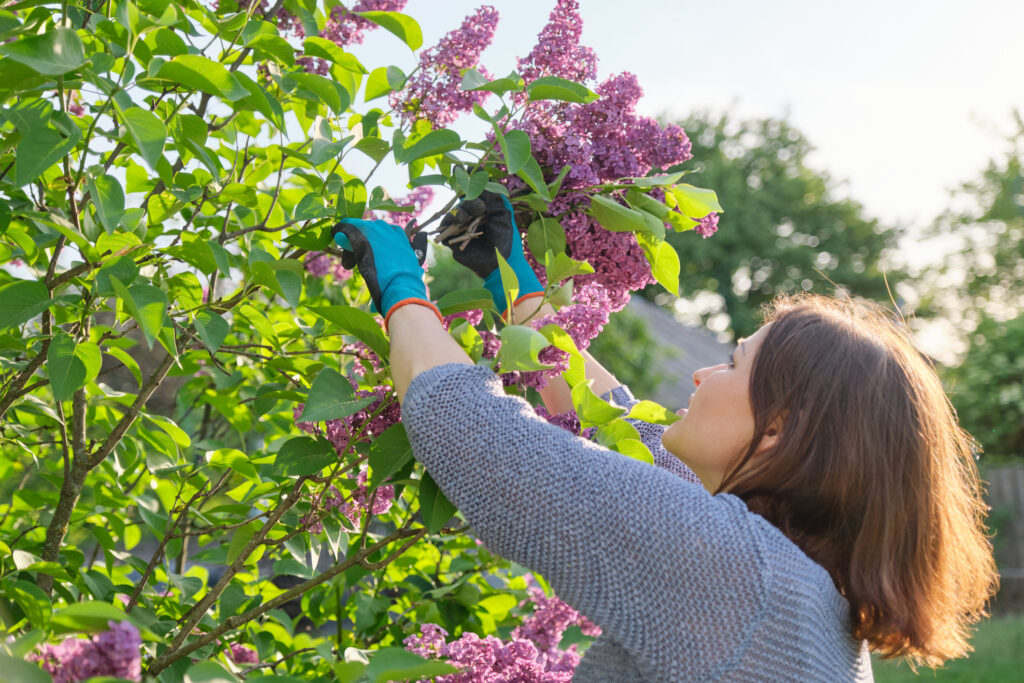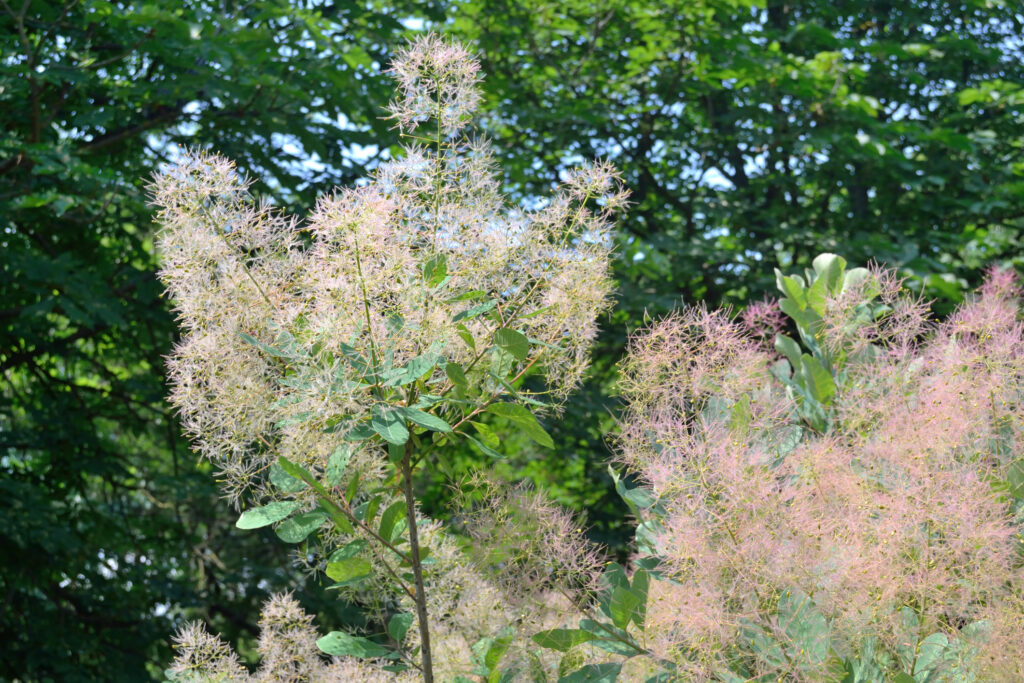
The weather outside may be cold, but there is something that can be done in the garden this time of year. Winter is an ideal time to prune your shrubs, for several reasons. The lack of foliage on the shrubs allows you to view their structure, giving you an idea of how much pruning is needed. Pruning shrubs during dormancy is less stressful for the plant, compared to pruning during the growing season. Pruning in late winter allows the wounds left by the pruning cuts to heal quicker, reducing potential disease or insect problems down the road.
Why Prune Shrubs?

Pruning has many benefits. Pruning encourages new growth, increases flowering, reduces disease, and improves the aesthetics of the plant. Pruning old or weak stems promote vigorous growth in the rest of the plant. The removal of interior branches opens the canopy of the plant, allowing increased airflow and sunlight to penetrate the entire plant. This reduces the risk of disease and insect pests. Some shrubs can be rejuvenated, allowing leggy plants to become healthy and full again. Shrubs that are overgrown can be cut back to a manageable size, making them an asset to a landscape, rather than a problem.
Before pruning, you should always have a goal for each shrub. Are you pruning to reduce the plant’s height? Perhaps your shrubs are overgrown and need rejuvenation to grow vigorously again. Ask yourself what you want your shrubs to look like in the future. Understanding why you’re pruning them will help you achieve those goals and improve your landscape.
Types of Pruning

There are several pruning methods for shrubs. How you prune them will depend on several factors. Consider the type of shrub and the overall health of the plant. When pruning, always remove dead or diseased branches on the plant. Branches that are rubbing or crossing other branches should be removed as well. When cutting back branches, it’s important to make your pruning cuts no more than ¼ inch above an existing bud. Areas of the stem that are left above a bud will rot, which can lead to disease or insect pest problems in the future. This concept applies to cutting off whole branches as well. Always make the cut where the two stems come together, and never leave a stub.
Thinning
This method involves removing 1/3 of the oldest stems on the plant each year. This form of pruning is usually done over a 3-5 year span, allowing the plant to maintain a natural shape. Thinning promotes new and vigorous growth below the cut while increasing airflow and sunlight into the canopy of the shrub. Thinning can be used to prune most deciduous shrubs.

Rejuvenation
A simple method that involves cutting each stem nearly to the ground, leaving only 4-10 inches of stem at the base. This form of pruning is useful for shrubs that have become overgrown or leggy. Only some shrubs can be pruned using this method.
Here are a few shrubs that respond well to rejuvenation pruning.
- Red Twig Dogwood
- Lilac
- Willow Shrubs
- Japanese Spirea
- ‘Annabelle’ Hydrangea
- Dwarf Bush Honeysuckle
- Potentilla
- Ninebark
Heading Back
Involves cutting back individual stems to reduce the height of the plant. This pruning method is effective for most plants. When cutting back the stems, it’s best to cut back to an outward-facing bud, this promotes outward growth. Cutting back to an inward-facing bud will create branches that rub and cross other branches inside the plant.
When To Prune Shrubs?

Many shrubs are grown for their attractive flowers, and pruning is an effective way to increase flowering. Shrubs produce their flowering buds at different times of the year. Understanding when the flower buds are created is an important factor to consider when pruning. Shrubs that flower in spring typically produce flower buds shortly after blooming. Pruning these shrubs during winter will reduce flowering for the upcoming spring. To preserve the flowers for spring, these shrubs should be pruned immediately after they bloom. However, it’s fine to prune spring-flowering shrubs in winter if you’re okay with a year of reduced blooms. This may be the case if the shrubs need a rejuvenation.
Here’s a list of spring-blooming shrubs.
Summer blooming shrubs tend to produce flower buds on new growth in spring. This allows them to be pruned in winter and early spring without removing flower buds.
Here are a few examples of summer-blooming shrubs.
- Hydrangeas
- Japanese Spirea
- Roses
- Smokebush
- Potentilla
Site Selection Is Important

Most shrubs require some pruning, but site selection can have a major impact on the amount of pruning required for a shrub to thrive. Before planting, it’s important to consider why you’re planting shrubs in a specific spot. You should also determine the characteristics of the site. How large of space are you trying to fill? This question is especially important for planting near buildings or sidewalks, where shrubs that are too large for the site create problems. Ask yourself how much sun or shade does the site receives? How tall do you want the shrubs to grow? Considering these questions will help you determine the type of shrubs that are suitable for your planting site. You should also visualize how the property will look in five, ten, or twenty years.
Here’s an example of why planning for the future is important. My family has a cabin in northern Wisconsin, where several Lilacs were planted 20 years ago. When the Lilacs were planted, they were in a perfect site with full sun. The Lilacs thrived for the next 15 years. However, as time progressed, the nearby trees began to shade the Lilacs, causing them to become leggy and have few blooms. As a result, the Lilacs had to be removed. Lilacs require full sun to thrive, and no amount of pruning could’ve helped them in this case. Utilizing proper site selection will help you avoid problems in the future while promoting healthy shrubs in your landscape.
Pruning is one of the most effective ways to improve the health of shrubs. Taking time each winter to evaluate and prune the shrubs in your landscape is worth it. Not only do shrubs benefit from pruning, but it gives us a chance to get some fresh air and exercise while observing the beautiful nature around us.
Other Reading Recommendations

- New 2024 Spring Garden Catalog Review
- Hydrangeas: Pruning For Blooms
- Winter Rose Care
- Shade Trees – Planting and Growing Guide
- Preparing for Winter: Simple Ways to Provide for Backyard Birds
- Guide To Winter Mulching
At Jung Seed Co, we strive to be your go-to guide for all your gardening needs. Our YouTube channel The Garden Doctor by Dick Zondag is where he provides gardening tips for all levels of gardeners. When you need reliable gardening advice, turn to the trusted experts at Jung.
View our new catalog online or browse our website for your gardening favorites. To receive info on new products, exclusive deals, and specials, be sure to sign up for our weekly email. Join our Facebook page, to discuss all things gardening!
About the Author: Matthew Olson is a professional horticulturist and garden writer. He has a bachelor’s degree in horticulture from UW-River Falls and is a certified professional with the Minnesota Nursery and Landscape Association. His enthusiasm for plants and the outdoors brought him to the green industry. He regularly writes articles about gardening for both gardeners and industry professionals. He can be reached at matt@mattolsonhorticulture.com